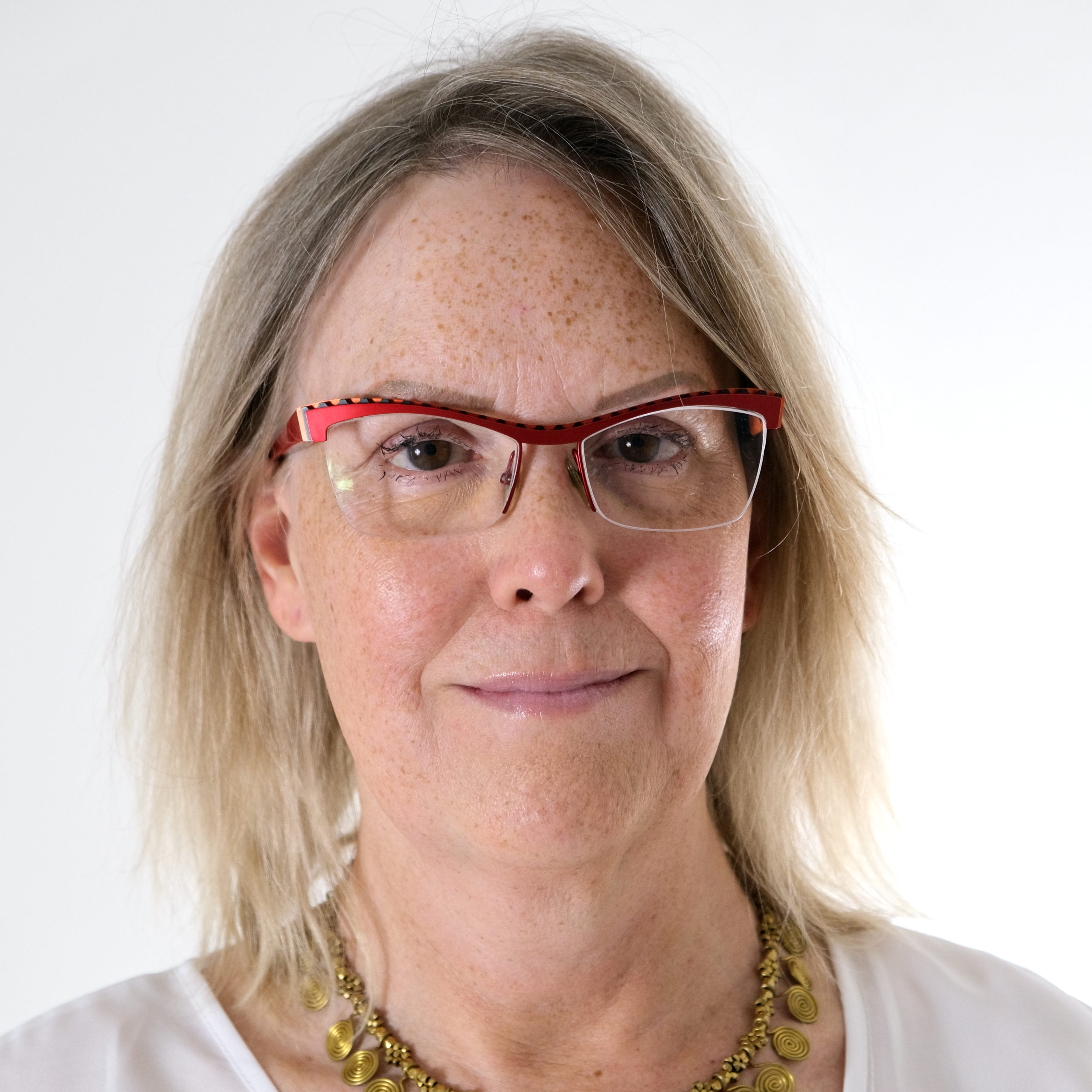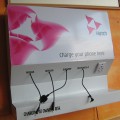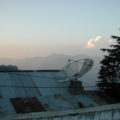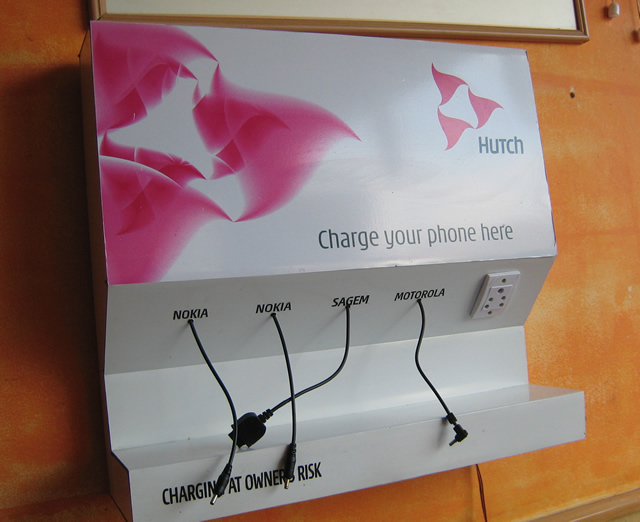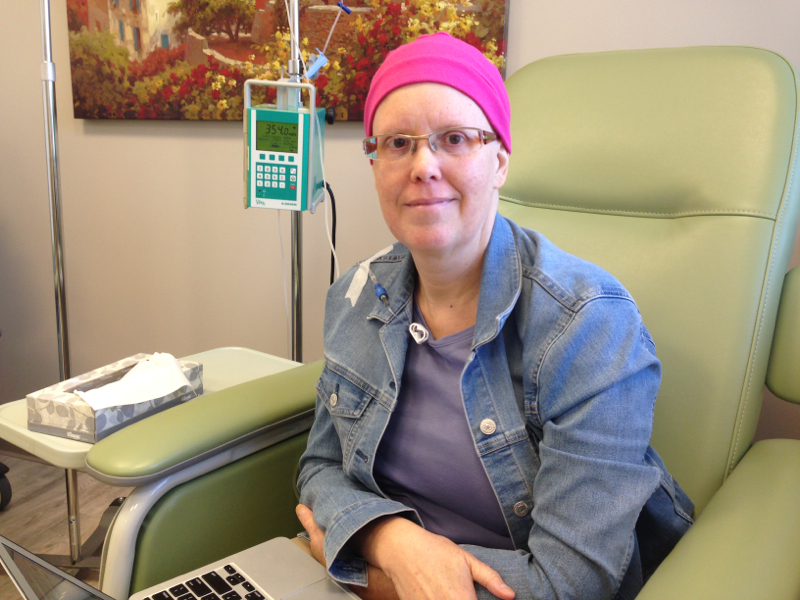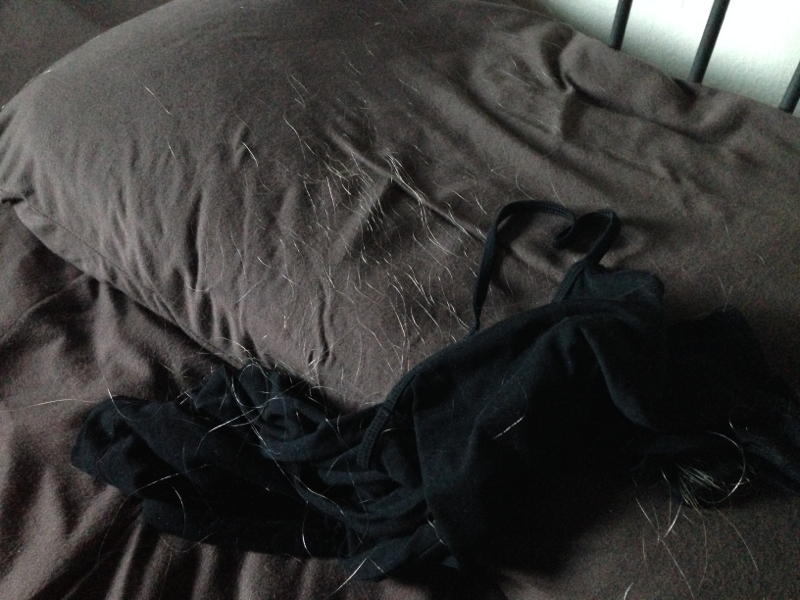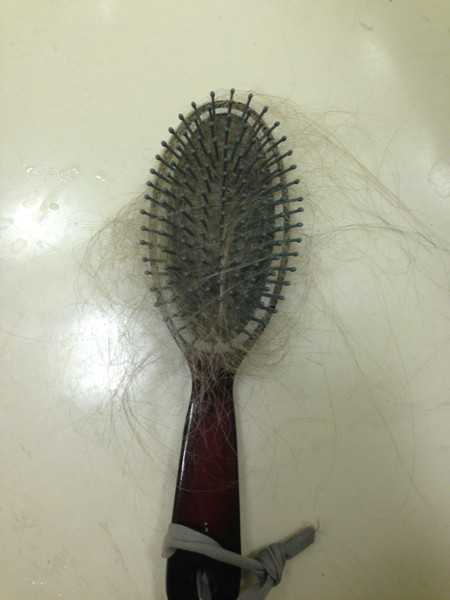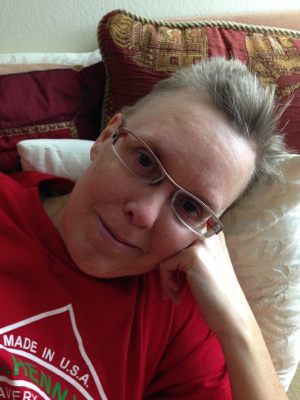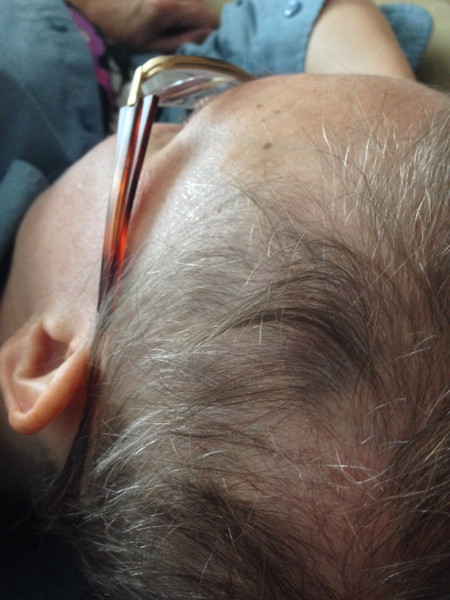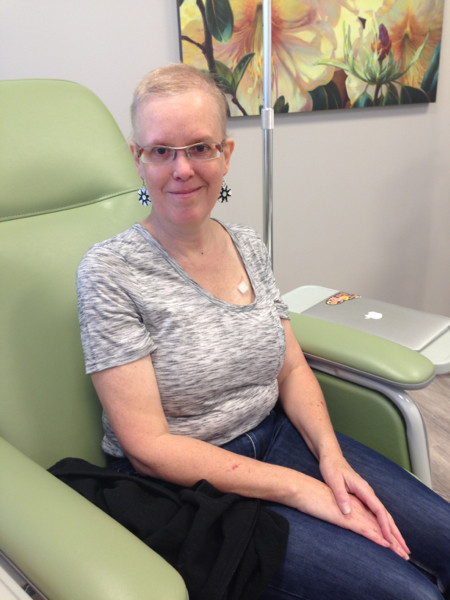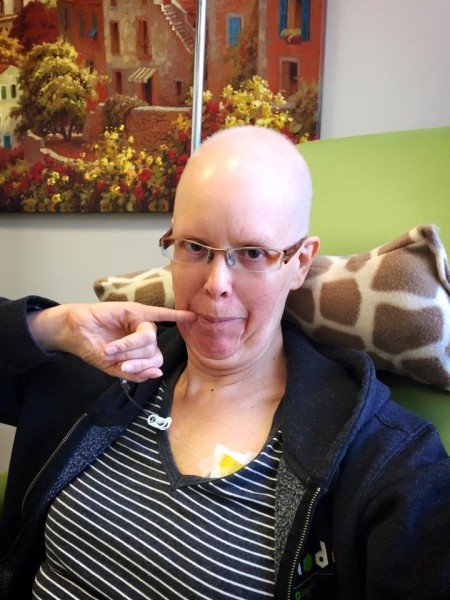Yesterday I went to the radiation oncology clinic to prepare for radiation therapy for breast cancer.
To set the scene: I had my last chemo infusion two weeks before, and am still having side effects from that, as well as symptoms from a sinus infection and side effects from the antibiotic I’ve been taking for over 15 days. The intervening two weeks were a welcome respite from seeing any medical personnel whatsoever, but, as I drove to the clinic, I found that it wasn’t enough: the mere thought of having to resume treatment, of any kind, made me sad and tired.
I didn’t know much about what to expect from radiation, except that it should be not nearly as bad as chemo, except maybe for the fatigue. “…radiation therapy is relatively easy to tolerate and its side effects are limited to the treated area.”
I soon learned that “not as bad as chemo” could be a very relative thing. The radiation nurse explained what I have to look forward to: something like a bad sunburn (on the right breast, the one being treated), increasing in severity over the course of the treatment and continuing for some weeks afterwards. “Bad” as in: possibly even blistering. It’s true that some women don’t react that badly to radiation, but I’m likely to be on the unhappy end of the spectrum because (from breastcancer.org):
“your skin might have a more dramatic reaction to radiation, covering more of the breast area. This is more likely to occur if:
- Your complexion is fair and you’re susceptible to sunburn.
- You have large breasts.
- You are receiving radiation after mastectomy, and the treatment is designed to give a high dose to the skin.
- You’ve had recent chemotherapy.”
Three out of four… I’m screwed.
And, for my large breasts in particular, it gets worse.
I wrote a long time ago about the difficulties of fitting bras. For me, this became both easier and harder when I moved back to the US. Harder because I gained and then lost a lot of weight, then, with the onset of menopause, began gaining breast size for no reason I could ever figure out. I now wear a size 34G bra.
For those don’t know much about bra sizing, this means that my ribcage right beneath my breasts is 34” around (this is the band size), while the breasts themselves are 5-6” larger – this means a cup size of G (or could be DDD, DDDD, E, F, or H, depending on the manufacturer).
Most women who have this much breast tissue are also larger around the ribcage; it’s not hard to find a 40G bra, for example. But 34G is very hard indeed – there are few styles available, and they are hard to find (I go to Nordstrom’s, which also has staff who are very good at fitting bras – that’s the easier part).
Most of the bras made for large breasts have underwires: U-shaped pieces of metal that run under and up the sides of each breast. (Yes, actual metal – they set off the metal detectors in airports.) The ones that don’t have wires have broad, tight bands of elastic. Sports bras are more likely to be soft, but also plaster the breasts down to keep them from bouncing during exercise. Neither of these is a good option:
- A large breast has a deep fold under it, which of course gets sweaty no matter what I wear or don’t.
- Now imagine severe sunburn in that area, which usually never sees sun.
- Now imagine that skin becoming possibly blistered, with extra irritation from sweat, chafing, and heat. (I’m having hot flashes, too, which mean I get sweaty more often!)
- Now imagine wearing a piece of metal tight or elastic against that for hours (yes, there’s cloth over it, but…).
The nurse told me not to wear underwires throughout treatment, until the skin has recovered afterwards. I could have worked that out for myself. But what the hell is my alternative?
The standard advice on the cancer forums is to wear a 100% cotton bra, with a front closure, a size larger than you normally wear. Guess what? THERE IS NO SUCH THING IN MY SIZE. Those kinds of bras come in what I call “fucking stupid sizing” – S, M, L, XL, 2XL, where large cup size assumes also large band size. If I get a band that fits my ribcage, my cups will overflow severely. If I get a cup size large enough, the band will be so loose that my boobs will fall out the bottom. I have some like this that I wear for minimal support and comfort at home, but I would not be comfortable wearing them (physically or psychologically) in public.
Going braless is not an option. Large breasts are heavy, especially mine (dense breast tissue, remember?). They need support, and hurt without it.
Most of this flashed through my mind as the nurse was explaining other radiation side effects, like fatigue (yeah, that happens, too – no one knows exactly why).
Then she gave me a form to fill out, a new requirement for hospitals to measure improvement of patient “distress,” instead of their previous measurements of sheer physical pain. I think I scared her: I was pretty damned distressed by the time I filled out the form. She recommended a local cancer support center, and the clinic’s social worker (this was part of the standard info packet anyway).
Other fun things about radiation include that I shouldn’t swim or sunbathe throughout. Fortunately, I’m not much of a swimmer anymore, and mostly actively avoid sun; I had enough of bad sunburns in childhood.
Then I went on to the actual prep part of the visit. This meant stripping to the waist and putting on a hospital gown, then waiting in a waiting room as I will for actual visits. The worst part of that was the TV. Ten minutes’ exposure to the tripe that is daytime television is ten minutes too much.
The technician came and escorted me back to the radiation area. The preparation was to figure out how to aim the linear accelerator they’ll be pointing at my breast. I had to lie on a table with a CT scanner, my right arm over my head, supported/held in padded open cuffs at the upper arm and wrist. As I soon discovered, these were not comfortable: the one at the upper arm was pinching a nerve such that my hand started going numb.
I lay there for 25-30 minutes while the technician aligned me on the table, put stickers on me to mark the surgery scar, my nipple, and other spots whose logic I did not understand, then ran me through the scanner, and had the oncologist come and check her work. Then, after a brief break for me to move my arm, she put me back in position, and tattooed five dots on and around my breast (one is centered on my sternum). I now know that it is extremely unlikely I will ever willingly get a tattoo; even that small experience of it was unpleasant, and I will not welcome any more needles into my life than I already have to.
Now I have another two weeks or so “off” while a form is made, I’m not sure whether that is to support the breast in a specific position, or to mask other parts of me that they don’t want to hit with radiation. Frankly, after all that, I wasn’t in a mood to ask any more questions.
After the form is ready, I’ll go back for a simulation: a dress rehearsal of radiation treatment, without the actual radiation. In the meantime, the radiation oncologist will be preparing a treatment plan with specific dates and doses to be administered. As with chemo, I will see him once a week during treatment to monitor and try to manage side effects. At least this presumably will not involve needles for blood tests (though I’ll also be having a follow-up visit with the oncologist during this time to check cell counts etc., and I’ll have to have the port flushed with heparin once a month so I don’t get blood clots in it).
I spent a lot of the rest of the day crying. I’m so tired of being a cancer patient, tired in general, and utterly distraught at the idea of having any more pain and problems with my breasts. It’s hard enough to deal with them under normal circumstances. There would have been a certain relief in getting a double mastectomy and just having done with them.
my breast cancer story (thus far)


